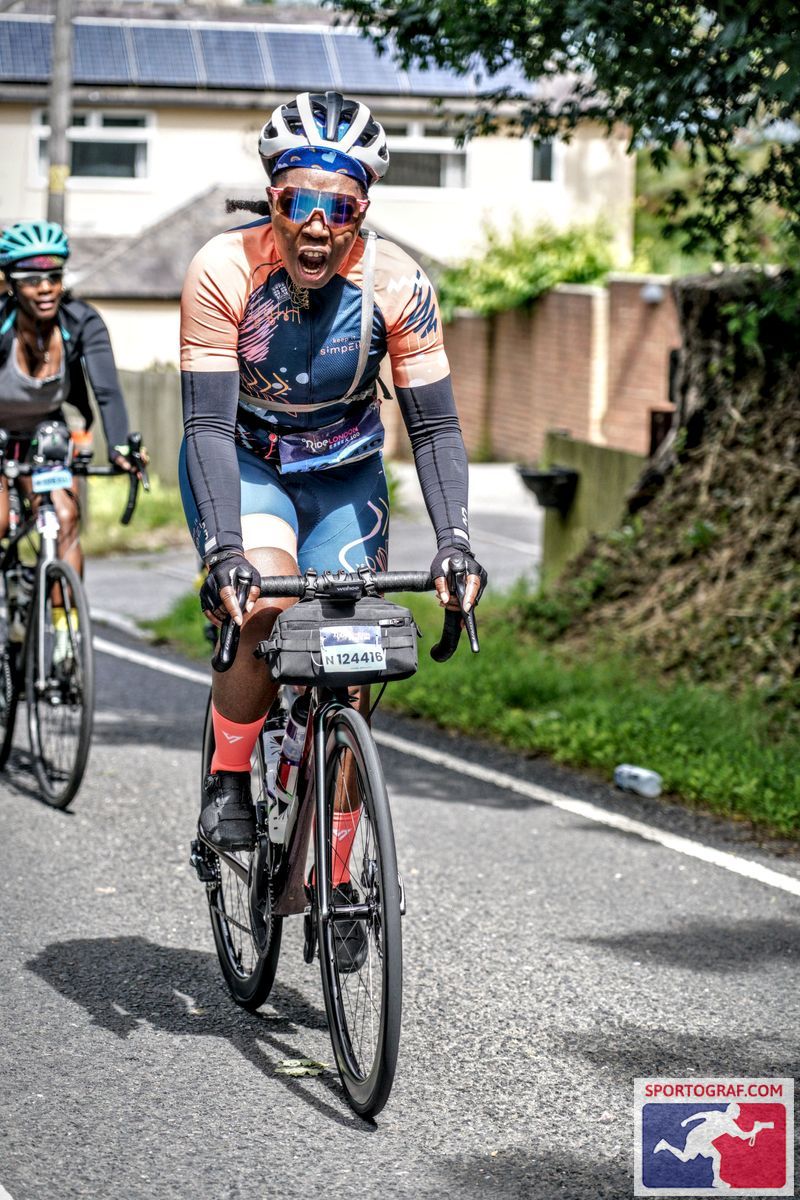
I know I won’t be the only cyclist out there wondering how to get better at cycling up hills. However, I’ve come to the conclusion that avoiding the things I don’t like (i.e steep hills) isn’t going to help me achieve this goal. What also doesn’t help is the fact I’ve pretty much convinced myself that climbing by bike is my nemesis; we’ll come to mindset shortly though.
One thing I’ve always thought was epic about living in Essex, is that worst you will face are a few short steep climbs here and there, or some rolling hills. My favourite hill to use for training rides though, and most challenging, is the Mott Street climb which is #26 on the 100 Greatest cycling climbs list. Here’s the segment on Strava if you wanna check it out.
At just under one mile with an average gradient of 5%, but it does have two testing ramps of 15% to conquer. I like to use Mott Street as my benchmark for where my climbing fitness is on any given day.
Off the back of the announcement in 2021 that RideLondon 100 was coming to Essex, I decided that might just be the perfect time to stop saying I’d never ride 100 miles, and get it done. Having the roads and lanes of Essex to ourselves was not an opportunity I could turn down easily.
As a result, myself and fellow cycling coach Alison Woods of Veloqi CC also created Beyond CC – an inclusive community for women cyclists to support them to complete RideLondon Essex 100 or any other Big Hairy Audacious Goal they may have on two wheels.
Feedback from our community showed that alot of members wanted to know how to get better at cycling up hills and to improve their climbing ability. One member said she’s keen to “improve [her] hill climbing technique” and another said she wants to “get stronger for hills” …both of which are goals of my own.
So Alison and I put our heads together for an Instagram Live to chat all about How To Ride Hills Strong. You can watch the video here (it’s just 17mins long) or keep reading to find out the tips we covered to be a better climber.
How To Get Better At Cycling Up Hills
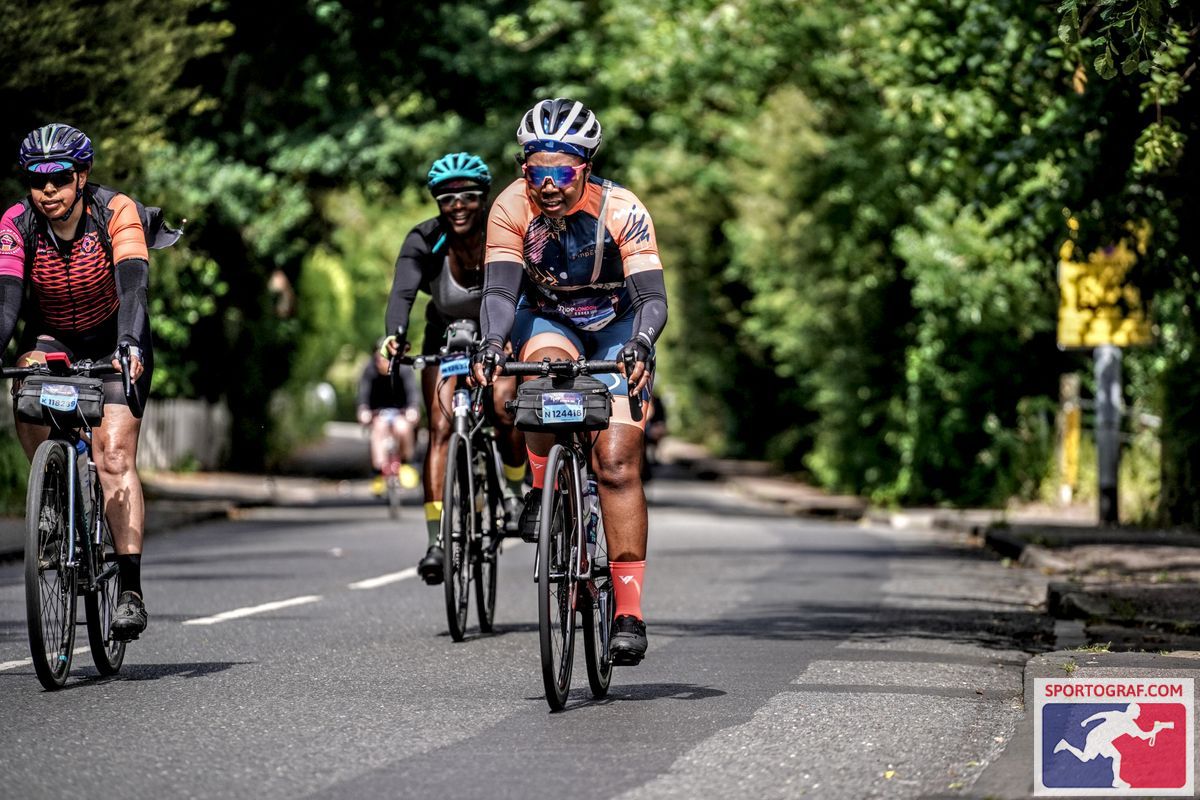
I’ve got the most effective ways and time efficient tips to help you find your sweet spot when it comes to riding up hills.
Adjust Your Mindset
Like I mentioned, I convinced myself a long time ago that I “hate” hills but maybe all is needed is a change in my mindset?!
If you tell yourself you’re not good at hills, that’s what will happen.
It’s not just me though, a lot of people suffer from hill anxiety especially when cycling with others. I’ve heard lots of people talking about not wanting to slow their ride buddies down when the hills come too.
But it doesn’t matter if you’re the last one to make it up the hill. From leading rides, I’ve found everyone has a personal preference for how to tackle climbs. Back in the day, I used to be a grinder – I loved the hard work of being in a high gear, lower cadence and using a bigger power output to get to the top.
Nowadays though, I’m all for saving my legs so opt for a lower gear, high cadence and lots of deep breaths to keep breathing under control. On my rides I simply tell everyone to ride their preferred speed up the hill and we then regroup at the top.
But other factors can play into how cycling uphill feels for you – for example, your cycling experience. Try not to compare yourself to other cyclists and focus on your own growth.
Hills are always going to be hard. It’s basic physics – you’re fighting against gravity. It’s not just you struggling.
Get Interval Training
As women, we really benefit from interval training which is why our Beyond CC training plans all included shorter interval sessions during the week. These build your fitness, strength and power which translates to you riding those hills stronger.
Although you can do interval training outdoors, it’s much easier to use an indoor trainer. We completed our interval rides together on Tuesday evenings using Zwift and discord. Although we were doing the same workout, it was personally tailored to each riders fitness through a functional threshold power / FTP test.
If you’re tight on time or days to ride, then your interval session is up there with your longer rides to get the maximum benefits you can from what training you can get done. When the weather is more favourable, we’ve enjoyed taking riders out for shorter hilly rides to get similar benefits to interval training.
Use Your Gears
I’ll be honest, it took me years to get to grips with the gears on road bikes but now, riding is a lot more enjoyable when I am in the right gear.
When I’m coaching skills sessions, we cover gears and I ensure everyone works through all their gears to get a feel for them. Here are a few awesome infographics I nabbed from a fellow cyclist to share with you:

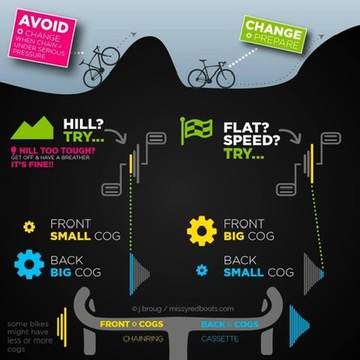
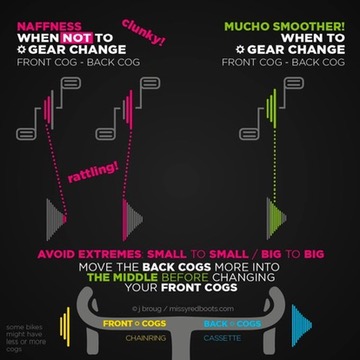
One reason I never used to use the gears needed for hill climbing was because I didn’t know what gear I was in and if I had any left to use due to issues with mobility in my neck.
Since I upgraded my bike to electronic gears I’ve been able to connect to my GPS so can see the gears on my screen. Not gonna lie though, a lighter bike, made for climbing – I have a Liv Langma – has also made the world of difference.
As I mentioned before, I used to always be grinding away in a harder gear and using sheer force to get up hills. My Langma does also have a power meter which helps gives me some more data to compare as time goes on.
Nowadays I aim to spin more – with a faster cadence – and low gears. It feels a lot less taxing on the legs and the lungs and helps me build my aerobic capacity a little more.
Remember That Every Hill Is Different
There’s no ‘one rule fits all’ for tackling hills in cycling. Climb length and elevation will always vary. For me, this used to play into me grinding up hills – I just wanted to get it over and done with, as quickly as possible!
Long slow hill climbs were Alisons hill climb of choice, while I prefer short steep hill climbs, kinda like what you find in cyclocross races.
If you have an event coming up and you’re worried about the hills, check out the course and the type of hills so you can train accordingly.
A great way to do this is to find a GPX file of the route online or on Strava so you can replicate it on your indoor trainer. Alternatively, you can scope out some local hills that are a similar gradient profile and level of effort.
Strength Training Off The Bike Is Fundamental
Of course all of your ‘climbing skills’ will be improved on the bike but there is plenty you can do off the bike. Strength work will keep your training varied and also contribute to reducing your risk of injury. Working on your upper body and gaining a strong core for good balance will help you to achieve higher power on the bike.
For our Beyond CC programme, we completed one 30min body weight core workout per week along side a 30min strength workout using whatever equipment was available to each rider. We also completed a HIIT workout to prime our bodies for short bursts of power.
The whole Foundations Strength programme is available on demand here.
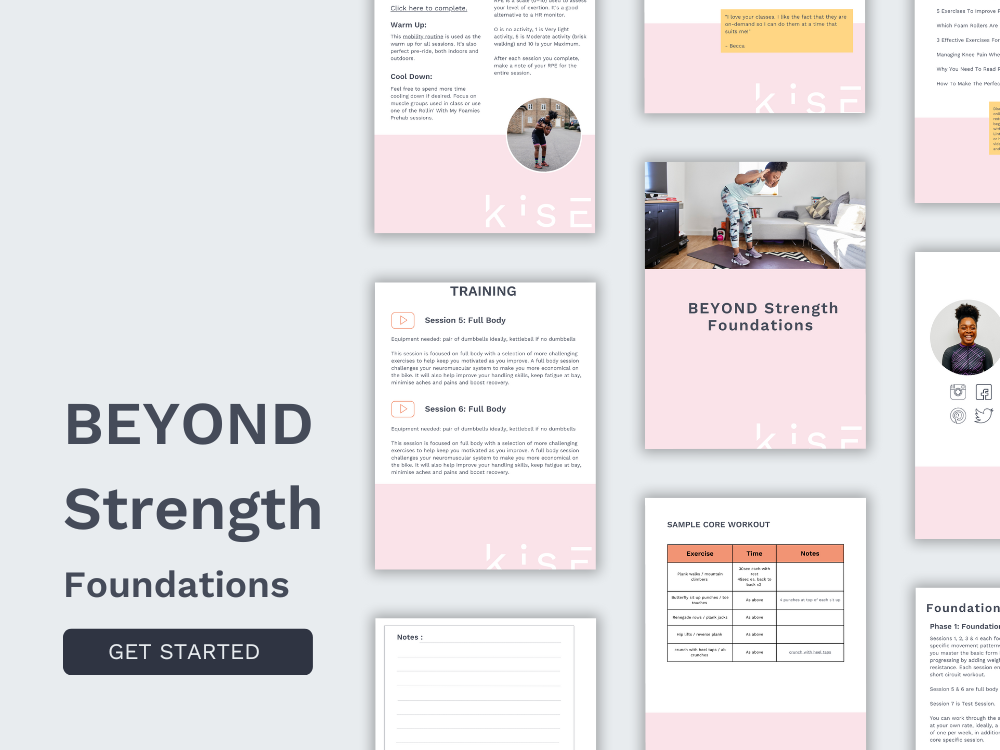
The Best Way To Get Better At Hills? Ride More Hills
And trust me, it feels so good when you conquer a hill that you had to walk up before. It’s a real sense of achievement and testament to your training.
It’s a good idea to mix up the hills with longer climbs, small hills, steep gradients and even hill repeats (dare I say it lol).
If you really wanna challenge yourself, you can sign up to the infamous Zwift Everest challenge which is 8,850 meters of climbing and then a further 41,150 meters gets you the coveted “Concept Z1” (aka “the Tron bike”). I’m currently somewhere past the first 8,850m but no-where getting my Tron bike.
RideLondon Essex 2024 Route
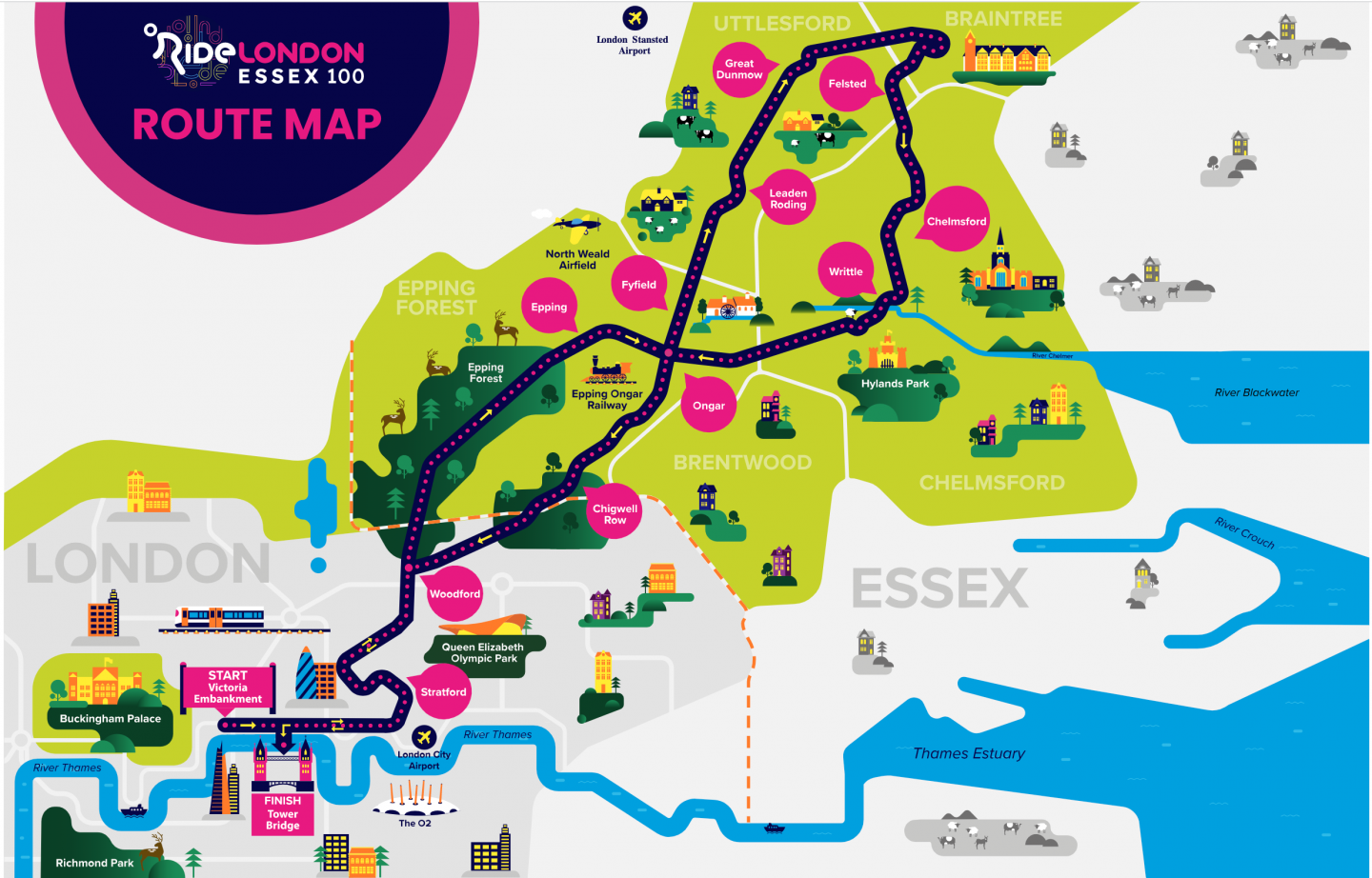
When RideLondon Essex hits the streets of Essex again in 2024, it’ll be the third year of a confirmed six I believe. So far, the same route has been confirmed for 2024 and well, it’s not too crazy.
Total elevation is 1,236m over the 100miles, with no big climbs.
If you’re planning on doing RideLondon Essex in 2024, then there’s no time like the present to start riding and practice riding hills, especially those on the route. The the first and last ten miles of the route – they’re (majority) not rideable on a bike outside of the event anyway – and get yourself into Essex for some practice.
I’m lucky in that the route is local to me, but if its not for you, you can upload the GPX file to your GPS or Zwift and ride parts of the route indoors to get a feel for what to expect on the day.
I’ve planned out a couple of loops incorporating the route that can be used in training as we approach event day in May:
Get Support For Your Cycling Goals
Alison and I created the ultimate community for women who ride and are looking to take on the challenge of going beyond their current limits. Originally the idea was to support women to train for their first century (100miles) in 2022 but we realised there is a space out there for a community that goes beyond just one event.
Beyond CC officially launched in January 2022 – check out our website and leave your email to be kept in the loop. If you have any questions, get in touch via the contact form on the site, via email, or our Ko-fi page.
Are you a fan of cycling up hills or not? Got any other climbing tips to share? – drop them in the comments below.
Elle
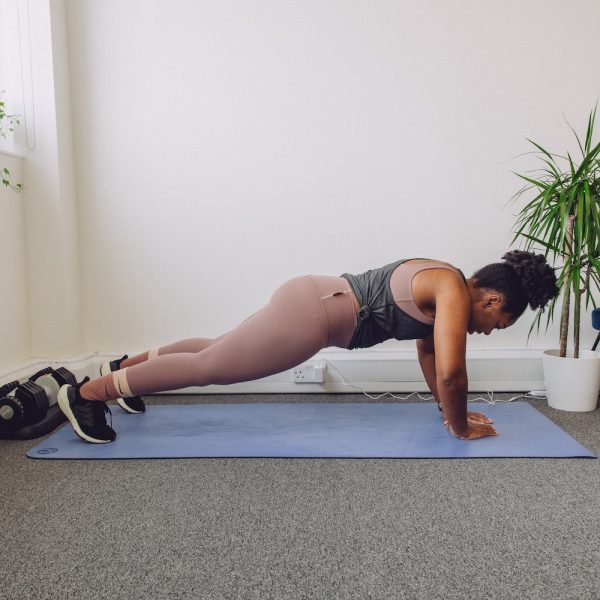


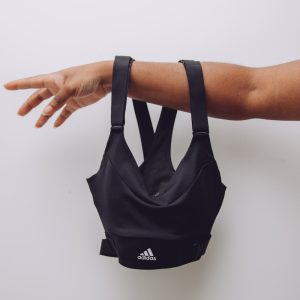

![Finally feel ready to add running back into my repertoire 🥰 starting with couch to 5km of course… goal being to actually finish it for once 🫠 today I started week 2 👉🏾 slide 3, joined by Ian who found my little Loughton meet up (which I started back in 2021 I think) via a takeover I did on @strava 🙌🏾To keep me on track, I’ve signed up for Hackney 5km (it’s an annual tradition now) and the @thelondon10k in July (⚠️ entries are still open friends!)Let’s connect on Strava? Comment Strava below and I’ll send you my link, you send me yours back ✨[running the 10km on a media bib]#couchto5k #runwalk #keepitsimpelle #runninggoals #strava #stravarunning #thisgirlcan #thisgirlcanrun #thisgirlcanessex #fitnessjourney #buildingabase](https://www.keepitsimpelle.com/wp-content/plugins/instagram-feed/img/placeholder.png)

Leave a Reply